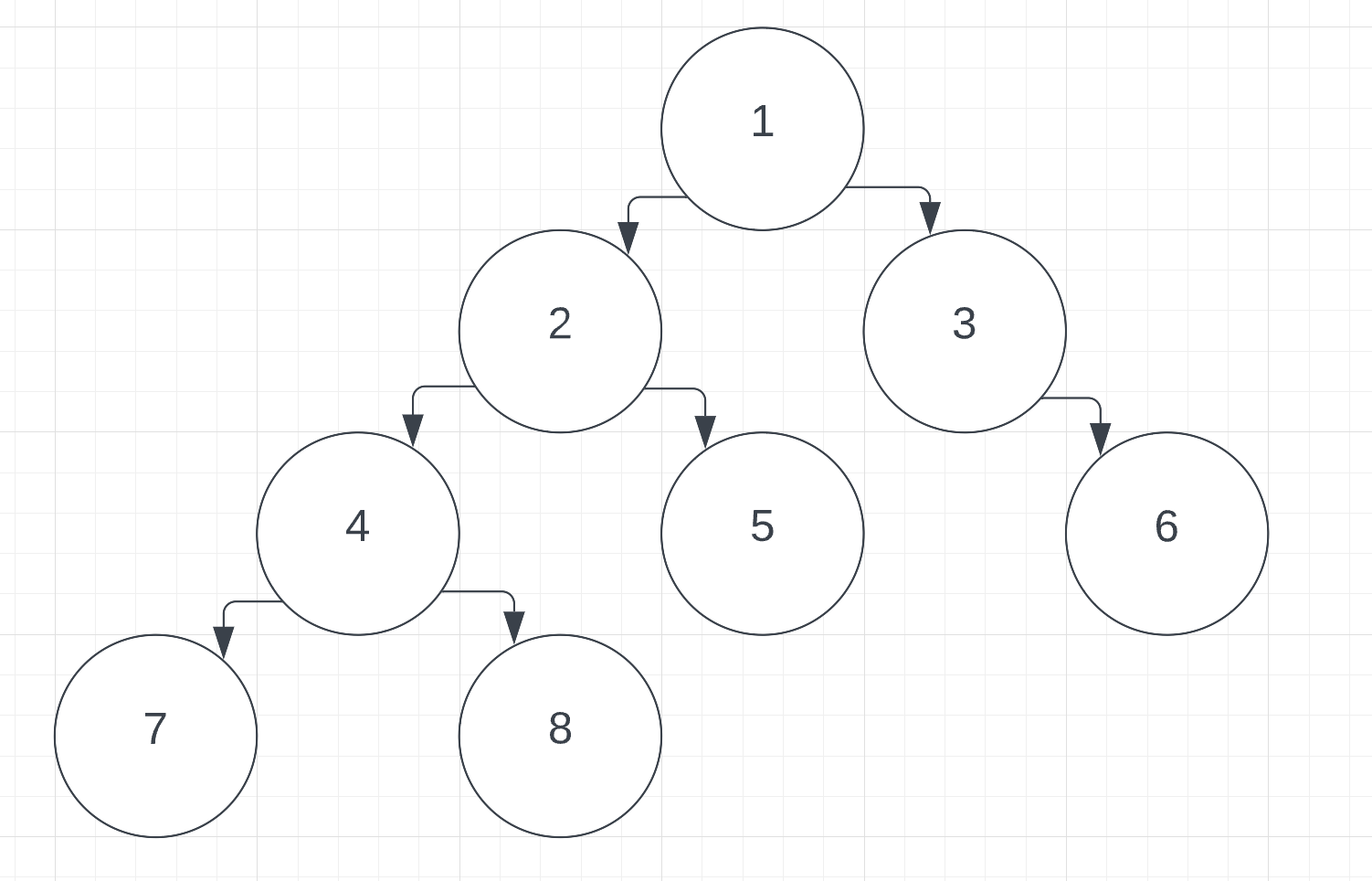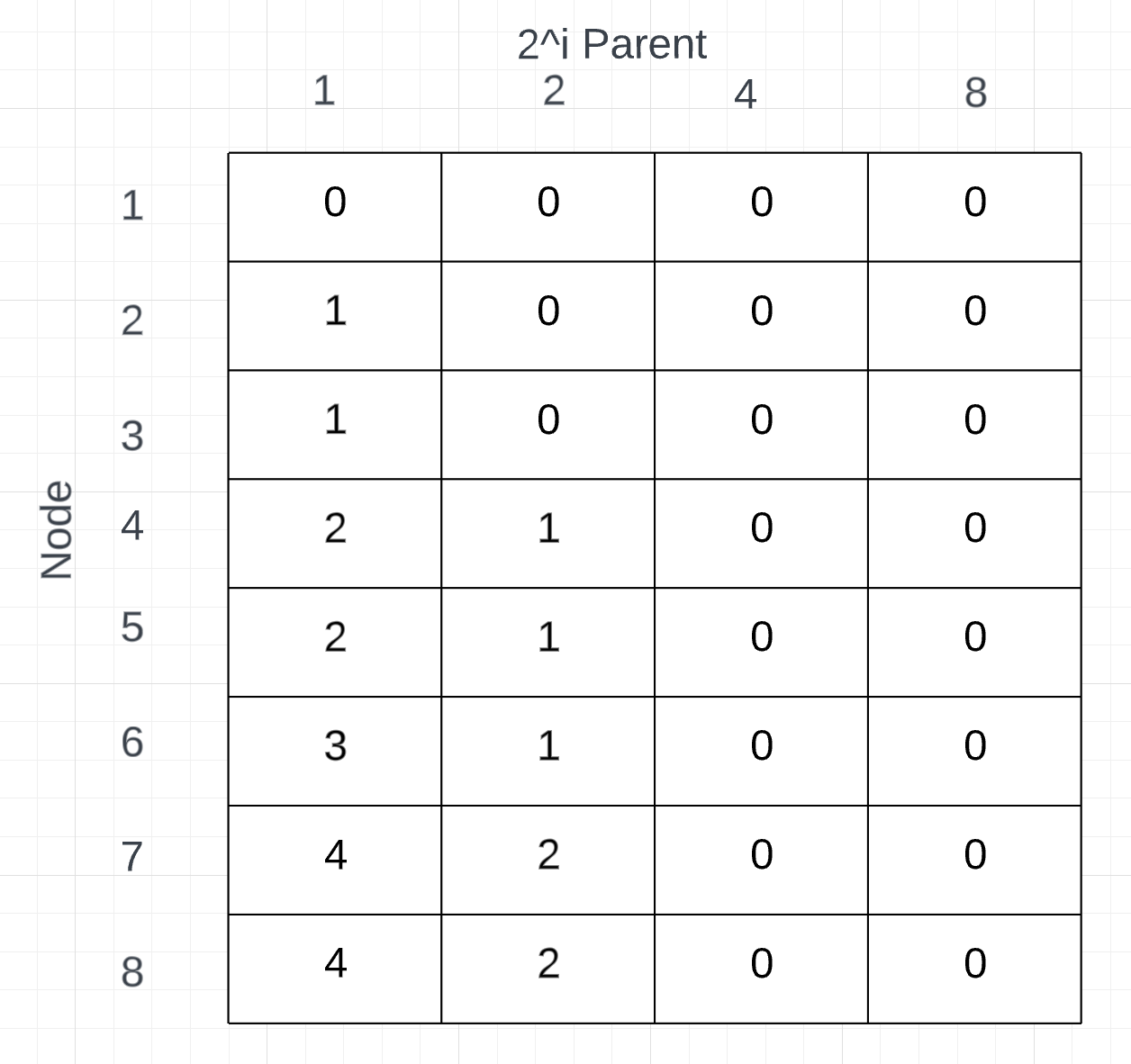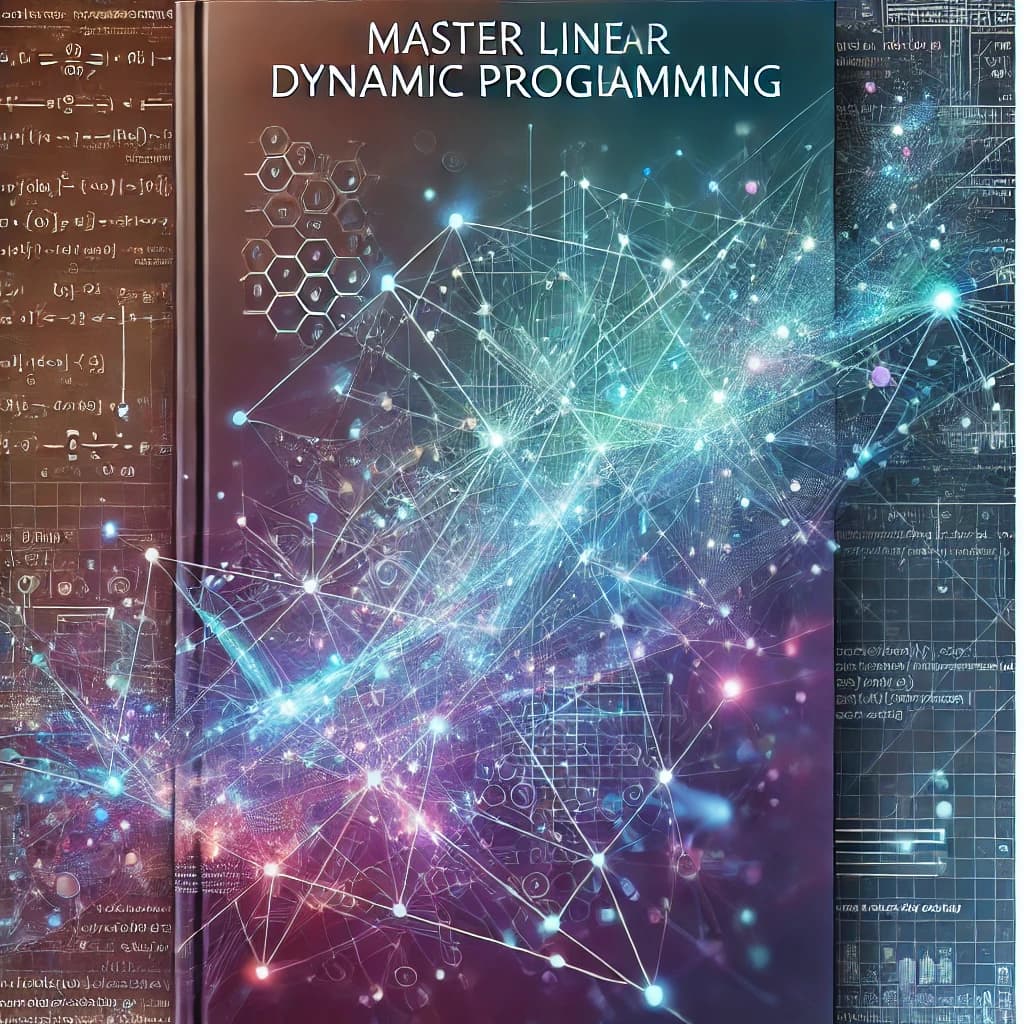Optimizing Range Queries with Sparse Table for LCA
Written on May 23, 2023
Views : Loading...
Sparse Table: A Powerful Data Structure for Efficient Range Queries
- The Sparse Table is a data structure used to efficiently answer range queries on a static array.
- It is used for frequent range queries, such as finding the minimum, maximum, sum, or any other associative operation over a subarray.
- It allows us to perform range queries in O(1) time complexity while having a preprocessing time of O(n log n).
- This makes it an excellent choice for scenarios where the array is static or changes infrequently.
The Sparse Table Basically Stores 2i-th Parent of Nodes
- Let's try to construct a Sparse Table for the following Binary Tree.

We can see that
- Node 1 is root hence it has no parent. Let default parent be 0.
- Node 2 and 3 have 1st parent as 1 and 2nd parent 0.
- Node 4 and 5 have 1st parent as 2 and 2nd parent as 1 and 4th parent as 0.
- Node 6 1st parent as 3 and 2nd parent as 1 and 4th parent as 0.
- Node 7 and 8 have 1st parent as 4 and 2nd parent as 2 and 4th parent as 0.
Basically we want to look at 2i-th parent of every node and store it in a table.
- Hence the Sparce Table for this Binary Tree will look like :

Coding Sparse Table
Python Code :
class Sparse_Table:
def __init__(self, graph: dict):
self.M = int(math.log2(len(graph)+3) + 2)
self.parent = [[0]*self.M for _ in range(len(graph)+3)]
self.depth = [0]*(len(graph)+3)
self.dfs(graph)
def dfs(self, graph: dict):
def dfs1(curr: int, par: int):
self.parent[curr][0] = par
self.depth[curr] = self.depth[par] + 1
for j in range(1, self.M):
self.parent[curr][j] = self.parent[self.parent[curr][j-1]][j-1]
for child in graph[curr]:
if child != par:
dfs1(child, curr)
dfs1(1, 0)
Common Applications of Sparce Table
- Range Minimum/Maximum Query (RMQ): Sparse tables can be used to solve the RMQ problem efficiently. They can answer queries for finding the minimum or maximum value in a given range of an array in O(1) time after O(n log n) preprocessing, where n is the size of the array.
import math
class RMQ:
def __init__(self, arr):
self.arr = arr
self.n = len(arr)
self.lookup = [[0 for i in range(self.n)] for j in range(self.n)]
self.buildSparseTable()
def buildSparseTable(self):
for i in range(0, self.n):
self.lookup[i][0] = self.arr[i]
j = 1
while (1 << j) <= self.n:
i = 0
while (i + (1 << j) - 1) < self.n:
if self.lookup[i][j - 1] < self.lookup[i + (1 << (j - 1))][j - 1]:
self.lookup[i][j] = self.lookup[i][j - 1]
else:
self.lookup[i][j] = self.lookup[i + (1 << (j - 1))][j - 1]
i += 1
j += 1
def query(self, L, R):
j = int(math.log2(R - L + 1))
if self.lookup[L][j] <= self.lookup[R - (1 << j) + 1][j]:
return self.lookup[L][j]
else:
return self.lookup[R - (1 << j) + 1][j]
-
Range Sum Query (RSQ): Sparse tables can also be used to solve the RSQ problem, which involves finding the sum of elements in a given range of an array. They can answer queries for range sums in O(1) time after O(n log n) preprocessing.
-
Lowest Common Ancestor (LCA): Sparse tables can be applied to efficiently find the lowest common ancestor of two nodes in a tree. By precomputing information about the tree, sparse tables can answer LCA queries in O(1) time after O(n log n) preprocessing.
class LCA:
def __init__(self, graph: dict):
self.table = Sparse_Table(graph)
# Returns the LCA of Nodes U and V
def getLCA(self, u: int, v: int):
if self.table.depth[u] < self.table.depth[v]:
u, v = v, u
diff = self.table.depth[u] - self.table.depth[v]
for i in range(self.table.M-1, -1, -1):
if (diff >> i) & 1:
u = self.table.parent[u][i]
if u == v:
return u
for i in range(self.table.M-1, -1, -1):
if self.table.parent[u][i] != self.table.parent[v][i]:
u = self.table.parent[u][i]
v = self.table.parent[v][i]
return self.table.parent[u][0]
Returns the Distance between U and V
def dist(self, u: int, v: int):
return self.table.depth[u] + self.table.depth[v] - 2*self.table.depth[self.getLCA(u, v)]
-
Range Mode Query: Sparse tables can be extended to find the mode (most frequent element) in a given range of an array efficiently. By storing additional information during preprocessing, sparse tables can answer mode queries in O(1) time after O(n log n) preprocessing.
-
Range GCD/LCM Query: Sparse tables can be used to find the greatest common divisor (GCD) or least common multiple (LCM) of a given range of elements in an array. They can answer GCD/LCM queries in O(1) time after O(n log n) preprocessing.
import math
class Range_GCD_Query:
def __init__(self, arr):
self.arr = arr
self.n = len(arr)
self.lookup = [[0 for i in range(self.n)] for j in range(self.n)]
self.buildSparseTable()
def buildSparseTable(self):
for i in range(0, self.n):
self.lookup[i][0] = self.arr[i]
j = 1
while (1 << j) <= self.n:
i = 0
while (i + (1 << j) - 1) < self.n:
self.lookup[i][j] = math.gcd(
self.lookup[i][j - 1], self.lookup[i + (1 << (j - 1))][j - 1])
i += 1
j += 1
def query(self, L, R):
j = int(math.log2(R - L + 1))
return math.gcd(self.lookup[L][j], self.lookup[R - (1 << j) + 1][j])
- Range Kth Smallest/Largest Query: Sparse tables can be employed to find the Kth smallest or largest element in a given range of an array. By storing additional information during preprocessing, sparse tables can answer Kth smallest/largest queries in O(1) time after O(n log n) preprocessing.
Share this blog
Related Posts
25-11-2024
In the realm of graph theory, understanding the connectivity of a network is crucial for numerous ap...
24-11-2024
Dive deep into the Z Algorithm, a fundamental technique in string processing. This blog elucidates t...

28-07-2024
In this comprehensive guide, you'll master essential SQL queries to ace your database-related interv...
04-11-2023
Explore the most efficient Sorting Algorithms for Competitive Programming and Interviews. Learn abou...

23-07-2023
This document discusses various variants of the problem of dividing n balls into *m* boxes. Markdown...

22-07-2023
Enhance your dynamic programming skills with our comprehensive collection of Linear DP problems from...
19-07-2023
Become a Tree Algorithms expert with our comprehensive solutions for CSES and various problem sets. ...

17-07-2023
Explore efficient solutions and master essential algorithms for CSES Graph problems in the CSES Prob...
15-07-2023
Explore efficient solutions to the Sorting and Searching section in the CSES Problem Set. Master ess...